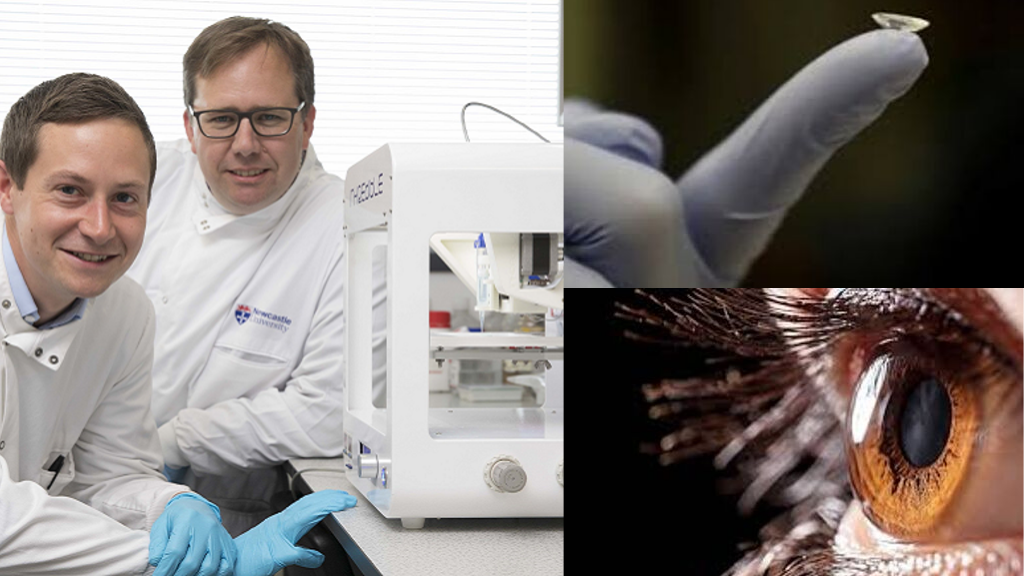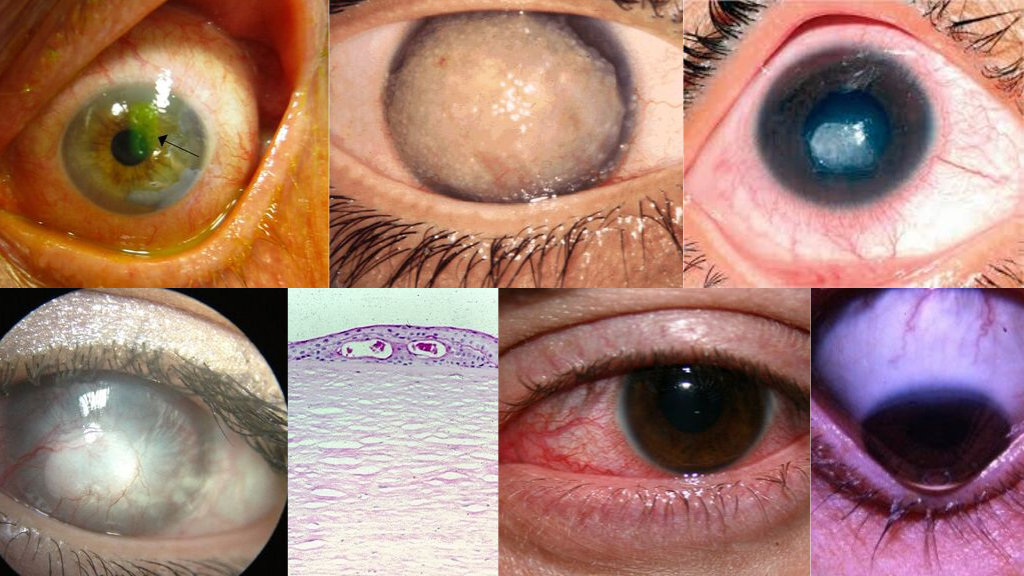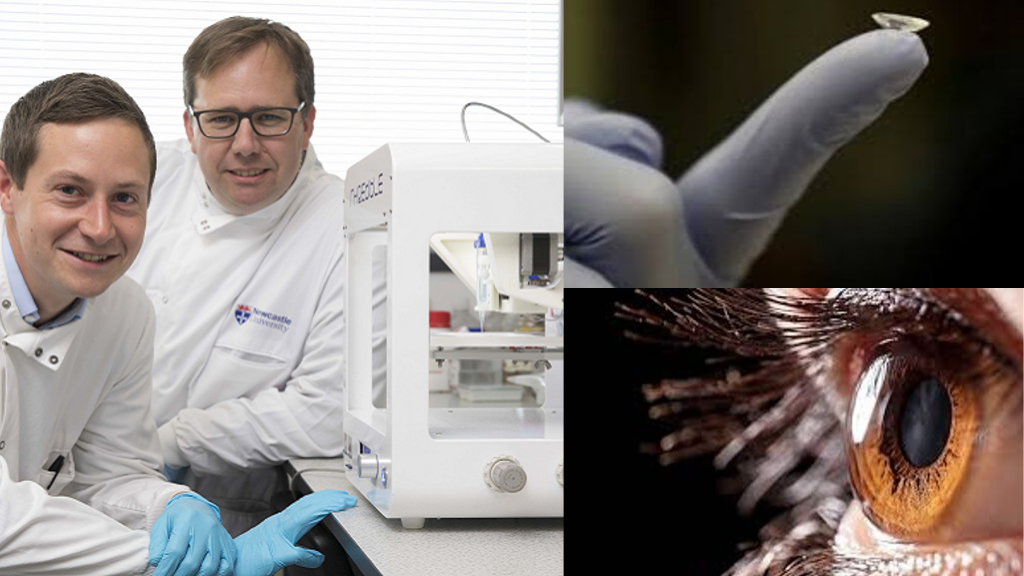3D printed Bio-ink Human Cornea
3D printing is evolving in the field of Medicine-Bioprinting Human Cornea

- In November 2018 the First 3D printed Human Corneal Tissue at Newcastle University, printed inclusive of human corneal stromal cells with a 3D bio-ink human cornea that could last more than a week.
- The research took place from the past few decades, Dr. Che Connon tissues engineering professor from Newcastle University, Tyne, U.k has been working with human corneal cells.
- The 3D printed bio-ink human cornea that has encapsulated corneal keratocytes that advertised high growth at day 1 (>90%) post-printing and at 7 (83%) and it was a combined mixture of sodium alginate and methacrylate collagen.
- This year the U.S Researchers, Florida A & M University a team of researchers led by Mandip Sachdeva Pharmaceutics professor developed a 3D printed cornea similar to real cornea following the research work of Dr. Che Connon.
- The team developed a highly efficient printer that could print six corneas within 10 minutes were in 2018. The researchers could produce 1 cornea.
What is the importance of cornea?

Human cornea is the most important part of the eye which is very transparent in nature and forms the outer most layer front part that encloses iris, pupil and anterior chamber. Cornea serves as the protective layer of the eye, pony up the focusing power of the human eye. Cornea is responsible for the transmission and refraction of the light. That is, in turn, focused on the retina with the help of the anterior chamber and lens. So cornea is most important for humans to see accurately because approximately 80% of the refraction of the human eye is done by it. Therefore, 3D bio-ink human cornea might help us.
When do we require cornea transplantation?
Multiple reasons why you many require corneal transplantation. It’s most probably due to infections and inflammations people don’t care about it. And, later that may cause a great blunder called corneal scarring. Due which people are unable to see properly and accurately. Some of the infections and corneal disorders due to which people need to undergo corneal transplants.

- Corneal abrasion: It is a condition in which there is a scratch on the surface layer of the cornea involving loss of the epithelial layer of the eye which led to trauma of the surface of the eye. Pain, redness, light sensitivity, and feels as if there is a foreign creature within the eye. These are the most common symptoms.
- Corneal dystrophy: a medical condition that is hereditary in nature, which affects one or more parts of the cornea lose their normal vision or clarity due to a layered buildup of cloudy material.
- Corneal ulcer: refers to infectious cause, an inflammatory or infective condition that involves disruption of its epithelial layer with an involvement of the corneal stroma. Mainly caused to people with vitamin A deficiency. Due to nerve exposure corneal ulcers are painful and cause tearing, scrunch up eyes when viewing, and loss of the eye vision. Many other signs that cause ulcers such as miosis, aqueous flare, uveitis, axon reflex, prostaglandins, histamine, acetylcholine, and photophobia.
- Corneal neovascularization(CNV): occurs due to excessive growth of blood vessels from the precorneal plexus into the avascular cornea, caused by deprivation of oxygen from the air. Sight-threatening conditions caused due to infection, chemical injury, autoimmune, chemical burns and wearing contact lenses for a long period.

- Fuchs dystrophy( FCED or FED): Ernst Fuchs the Austrian ophthalmologist first invented this condition that is also called cloudy morning vision. Later, which affects both eyes and most commonly found in women than in men. It is a slowly progressing corneal dystrophy.
- Keratitis: Inflammation of the cornea, in which the front surface of the eye is inflamed that causes pain, impaired eyesight, photophobia, red-eye, and a dusty sensation.
- Keratoconus: Affects both the eyes, it is a degenerative disease that results in progressive thinning of the cornea. Results in blurry vision, double vision, nearsightedness, astigmatism, and light sensitivity.
Impact of 3D printed Bio-ink Human Cornea

In 2012-13 the survey done by the World Health Organization resulted in 12.7 million people need to be corneal transplantation. Therefore, 1 in 70 of the needs are covered worldwide. The transplantation helped to prevent corneal blindness. 4.9 million suffering from total blindness due to corneal scarring. The rate of cornea donation is less compared to the people required to transplant the cornea which led to the invention of 3D printing bio-ink human cornea which gave life to billions of people through transplantation. Artificial cornea may help millions of people to see this mesmerizing nature created by god. Through corneal transplantation, people can fulfill their dreams and can make history. Human eyes play a very vital role in each and every human being, 3D printing technology is helping to develop similar human cornea that can give new life to the people who are suffering from this.
Make the best of Geeetech A10 3D printer only @ Geeetech official site
